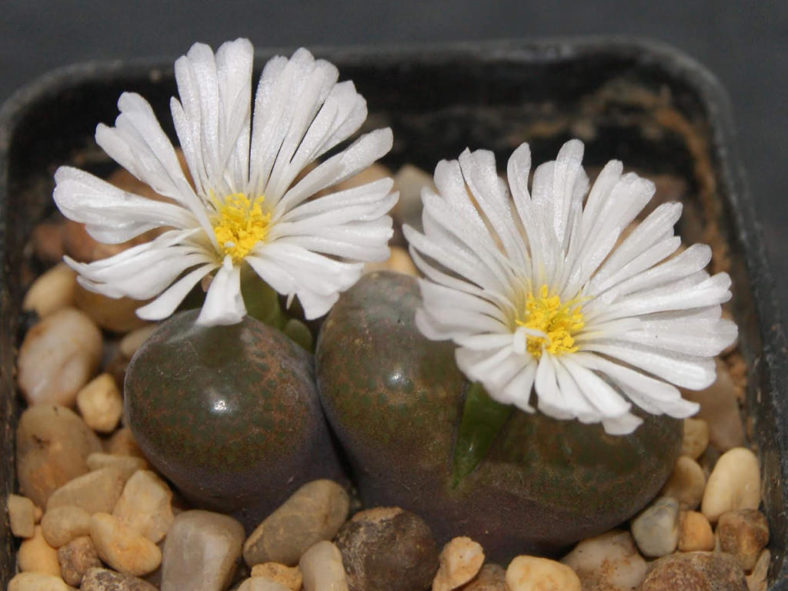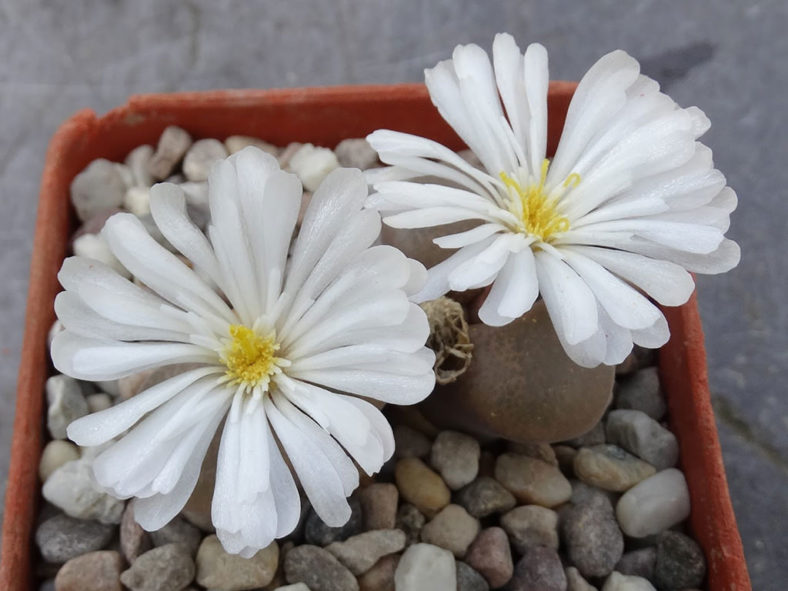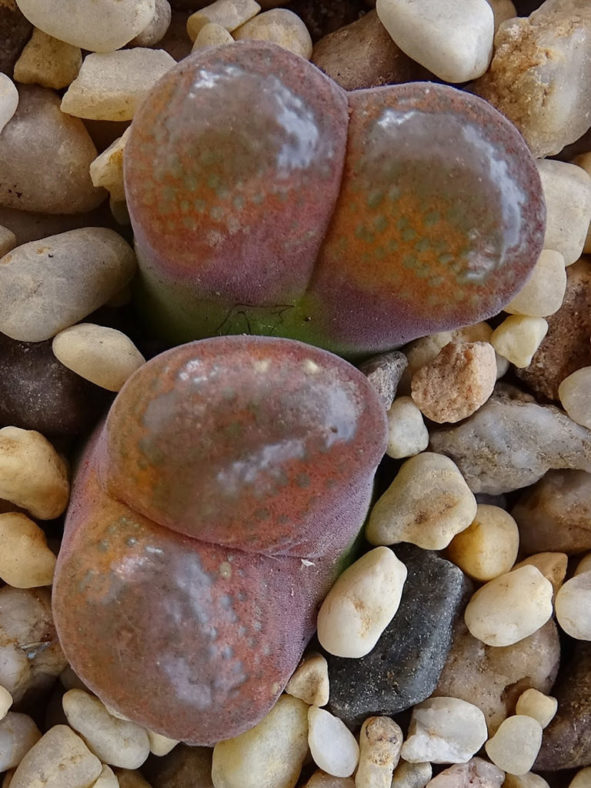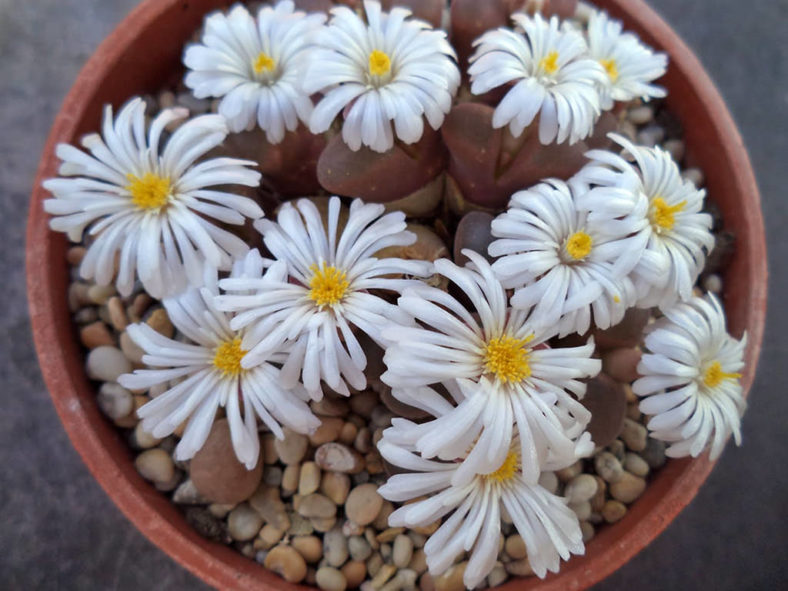Scientific Name
Conophytum friedrichiae (Dinter) Schwantes
Common Name(s)
Eye Leaves
Synonym(s)
Derenbergia friedrichiae, Mesembryanthemum friedrichiae, Ophthalmophyllum dinteri, Ophthalmophyllum friedrichiae
Scientific Classification
Family: Aizoaceae
Subfamily: Ruschioideae
Tribe: Ruschieae
Genus: Conophytum
Etymology
The specific epithet "friedrichiae (fried-RIK-ee-ay)" honors Margarete (Margarethe) Friedrich (fl. 1914), a South African teacher and plant collector who often accompanied Kurt Dinter.
Origin
Conophytum friedrichiae is native to South Africa (Northern Cape) and southern Namibia. It grows in quartz patches.
Description
Conophytum friedrichiae, formerly known as Ophthalmophyllum friedrichiae, is a dwarf succulent that forms a mound of thick, fleshy bodies of two opposite leaves separated by a deep fissure. The bodies are green to purple or reddish-brown. They can grow up to 1.2 inches (3 cm) tall and have a roundly-keeled upper surface with a large translucent window. The upper surface can measure up to 0.6 inches (1.5 cm) long and 0.5 inches (1.2 cm) wide.
The pure white, pinkish, or pale purple flowers appear in late summer and fall. They can reach about 1.2 inches (3 cm) in diameter.

How to Grow and Care for Conophytum friedrichiae
Light: This succulent needs bright light but does not like too much direct sun. To avoid sunburn, place your C. friedrichiae in a position to receive a few hours of full sun in cooler periods of the day. The plant stretches if it needs more light.
Soil: Conophytum friedrichiae thrives best in porous soil mixes that allow water to drain away quickly. Use a commercial potting mix specially designed for growing succulents, or make your own.
Temperature: High temperatures are not a problem, but the plant can be damaged when the temperature goes below freezing. It can withstand temperatures as low as 35 °F (1.7 °C). USDA Plant Hardiness Zones 10b to 11b, 35 to 50 °F (1.7 to 10 °C).
Watering: When dormant in the spring, Conophytum friedrichiae requires little or no water. When it begins growing in the fall, it is safe to water deeply, allowing the soil to dry before watering again. If leaves start to wrinkle during active growth, your plant needs water.
Fertilizing: This small plant is a light feeder and does not need fertilizer if repotted every two years.
Repotting: The best time to repot it is at the beginning of the growing season, but repotting can be done at almost any time while the plant is actively growing.
Propagation: Conophytum friedrichiae is usually grown from seeds. It can also easily be propagated by division. The best time to divide the plant is in late summer or early fall before it begins to break dormancy or after it has flowered. Sow the seeds in fall in a pot with a well-drained soil mix.
Learn more at How to Grow and Care for Conophytum.
Toxicity of Conophytum friedrichiae
Conophytum friedrichiae is non-toxic and safe to grow around children and pets.
Links
- Back to genus Conophytum
- Succupedia: Browse succulents by Scientific Name, Common Name, Genus, Family, USDA Hardiness Zone, Origin, or cacti by Genus
Photo Gallery
Click on a photo to see a larger version.


